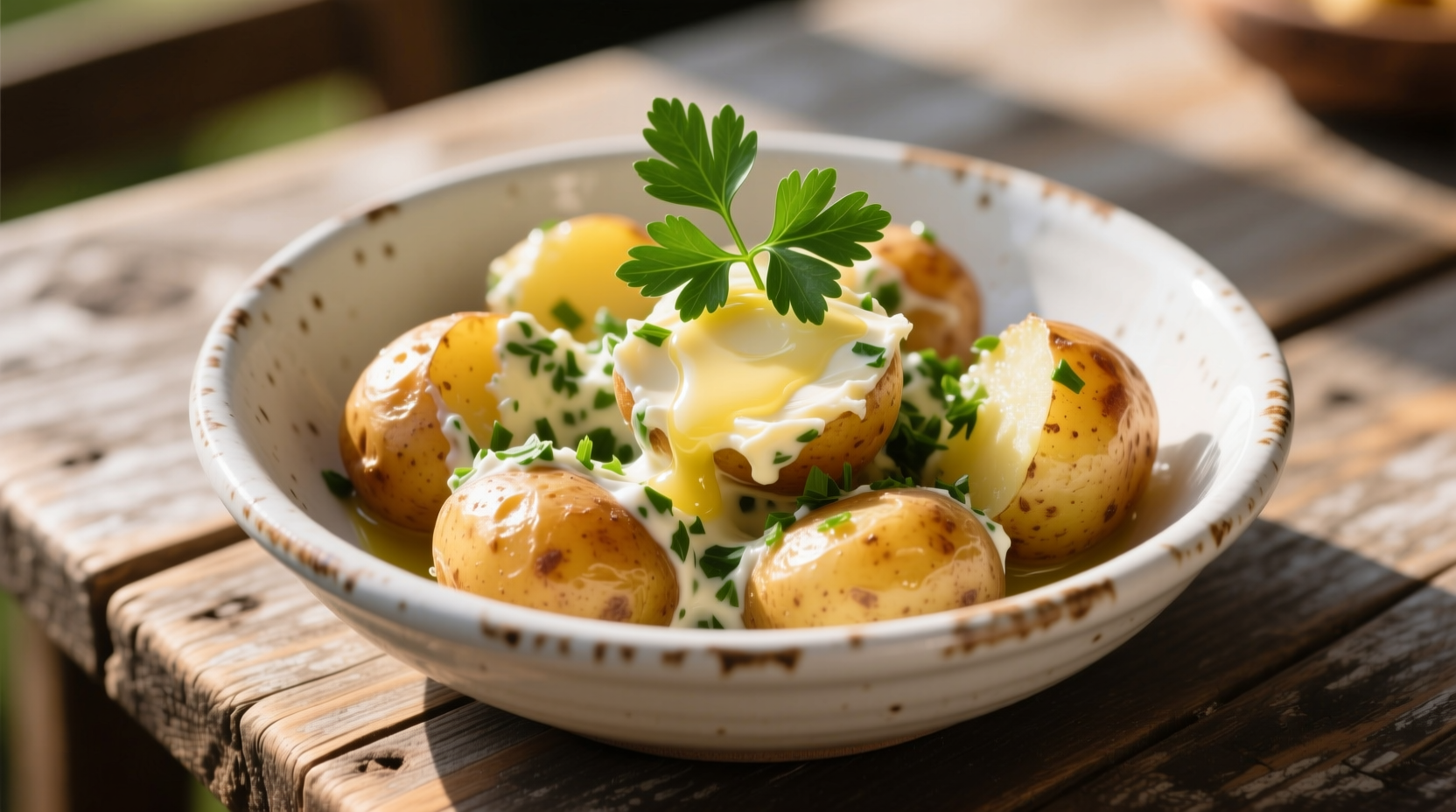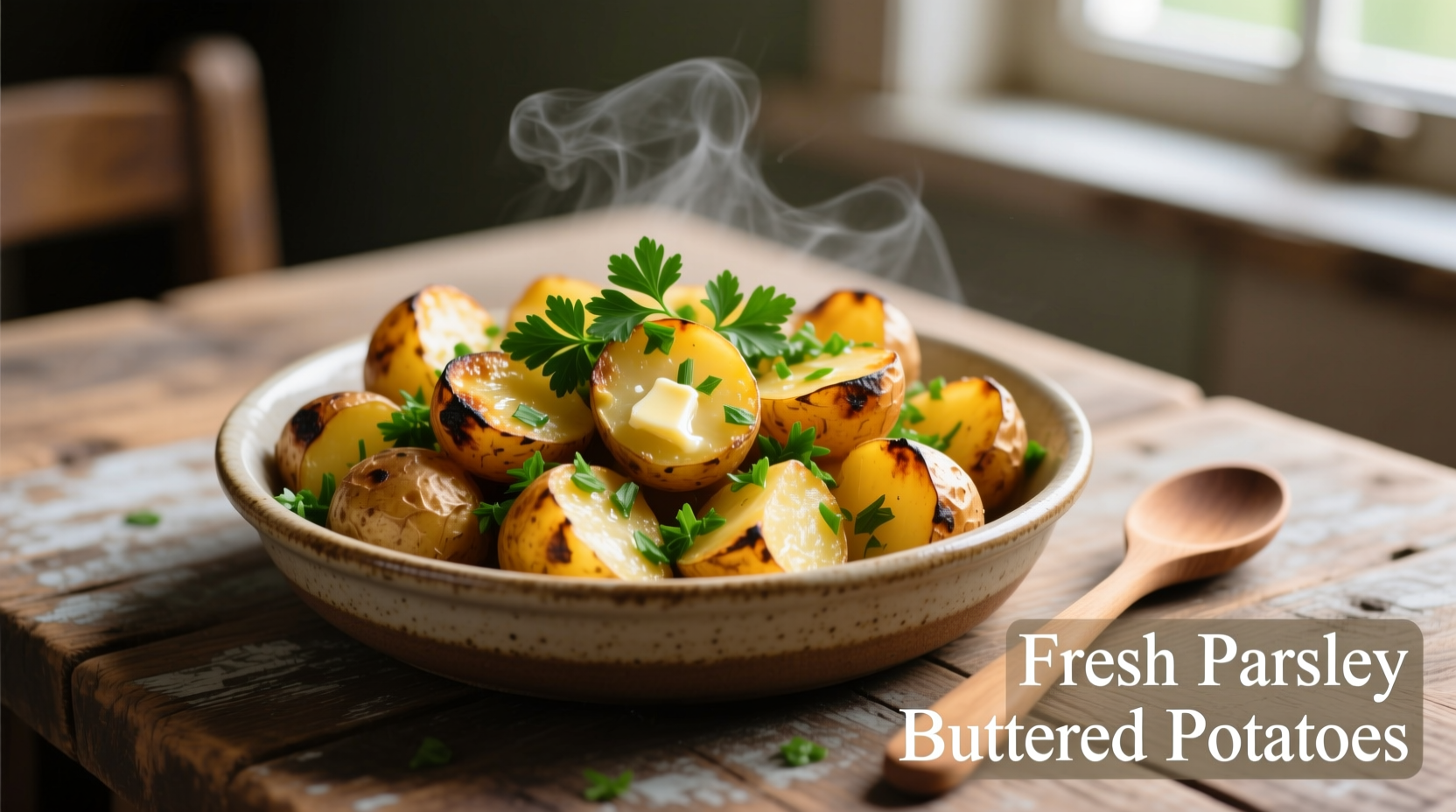The Secret to Flavorful Parsley Buttered Potatoes
Nothing elevates a meal like perfectly executed parsley buttered potatoes. This classic side dish combines the earthy richness of potatoes with the bright freshness of parsley and the luxurious mouthfeel of butter. The key to success lies in understanding potato starch behavior and proper emulsion techniques - principles professional chefs use daily.
Why This Recipe Works: Culinary Science Explained
Potatoes contain two types of starch: amylose and amylopectin. When boiled correctly, these starches gelatinize to create that perfect creamy texture without becoming mushy. Adding butter at the right temperature (120-140°F) creates a stable emulsion that coats each potato piece evenly. Fresh parsley contains volatile oils that degrade quickly with heat, which is why we add it at the end for maximum flavor impact.
Essential Ingredients and Their Roles
Using the right ingredients makes all the difference:
- Yukon Gold potatoes - Their medium starch content provides the ideal balance between fluffy interior and creamy texture
- Unsalted butter - Gives you control over seasoning while providing rich flavor
- Fresh flat-leaf parsley - Contains more robust flavor compounds than curly parsley
- Shallot - Adds subtle sweetness without overpowering the dish
| Potato Variety | Starch Content | Best For Buttered Preparation | Texture Result |
|---|---|---|---|
| Yukon Gold | Medium | ★★★★★ | Creamy with slight fluffiness |
| Russet | High | ★★★☆☆ | Fluffy but may disintegrate |
| Red Bliss | Low | ★★☆☆☆ | Firm, waxy texture |
| Fingerling | Low-Medium | ★★★★☆ | Firm yet creamy |
Step-by-Step Preparation Guide
Prep time: 10 minutes | Cook time: 15-20 minutes | Total time: 25-30 minutes
1. Potato Selection and Cutting
Choose uniform 1.5-inch cubes for even cooking. Smaller pieces cook faster but risk becoming waterlogged. Larger pieces may cook unevenly. The USDA Agricultural Research Service confirms that consistent sizing prevents overcooking of smaller pieces while ensuring larger pieces reach optimal tenderness (ars.usda.gov).
2. The Perfect Boiling Technique
- Start potatoes in cold, salted water (1 tablespoon salt per quart)
- Bring to gentle simmer (not rolling boil) - 180-190°F
- Cook until fork-tender (12-15 minutes)
- Drain thoroughly and return to warm pot
3. Creating the Butter Emulsion
Melt 4 tablespoons of unsalted butter with 1 minced shallot over low heat. Cook until shallot becomes translucent (2-3 minutes). Remove from heat and let cool slightly before adding to potatoes. This cooling step prevents the butter from separating - a technique documented in the Culinary Institute of America's professional cooking curriculum.
4. Final Assembly
Toss warm potatoes gently with butter mixture, then fold in 3 tablespoons of finely chopped fresh parsley. Season with freshly ground black pepper. For optimal flavor development, let rest 5 minutes before serving to allow flavors to meld.

Avoid These Common Mistakes
- Adding potatoes to boiling water - Causes uneven cooking and skin splitting
- Using melted butter directly from high heat - Creates separated, greasy texture
- Overmixing after adding butter - Releases too much starch, creating gluey texture
- Adding parsley too early - Degrades volatile flavor compounds through heat exposure
When This Dish Shines: Context Boundaries
Parsley buttered potatoes excel in specific culinary contexts:
- Perfect accompaniment to roasted meats (beef, chicken, lamb)
- Ideal for elegant dinner parties where simplicity showcases quality ingredients
- Works best as a side dish when main proteins have rich, savory flavors
- Not recommended with delicate fish or light vegetarian dishes where stronger flavors might dominate
Historical Evolution Timeline
Buttered potatoes have evolved significantly through culinary history:
- 16th Century - Potatoes introduced to Europe from South America
- 1748 - First recorded buttered potato recipe in French chef Vincent La Chapelle's cookbook
- 1800s - Became staple in European aristocratic cuisine
- Early 1900s - Entered American home cooking through French culinary influence
- 1950s - Popularized in American restaurants as part of "continental cuisine" trend
- Today - Modern interpretation focuses on quality butter and fresh herb pairing
Variations and Serving Suggestions
While classic preparation shines on its own, these variations work well for different occasions:
- Lemon-Infused - Add 1 teaspoon lemon zest with parsley for brighter flavor profile
- Garlic Buttered - Sauté 2 minced garlic cloves in butter before adding to potatoes
- Creamy Version - Incorporate 2 tablespoons heavy cream with butter for extra richness
- Herb Medley - Combine parsley with equal parts chives and tarragon for complex flavor
Storage and Reheating Guidelines
Store leftovers in airtight container in refrigerator for up to 3 days. Reheat using these methods:
- Stovetop (best method) - Gently warm in skillet with 1 tablespoon butter or broth
- Oven - Cover with foil and heat at 325°F until warmed through (15-20 minutes)
- Avoid microwave - Creates uneven heating and rubbery texture











 浙公网安备
33010002000092号
浙公网安备
33010002000092号 浙B2-20120091-4
浙B2-20120091-4